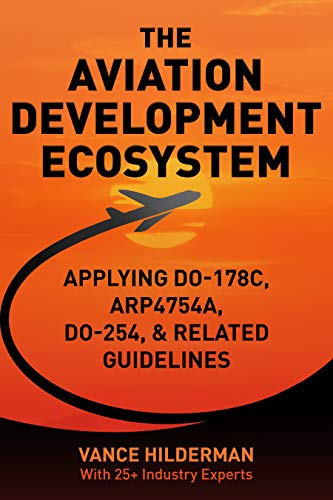Safety is of critical importance in the avionics industry. The development of DO-178C guidelines attempts to lay a framework to help eliminate “residual blindness”. Think of the parable of the seven blind men and the elephant for a moment. Each blind man described a different part of the elephant, but linking those parts to a whole is where the real challenge lies. This is the same with development teams. If each team or individual on the team attempts code independently the risk of creating something that is piecemeal and ineffective is vastly increased. Using DO-178C, through strict standards, helps to reduce problems and increase safety in avionics.
What is DO-178C?
This guideline is also known as the “Software Considerations in Airborne Systems and Equipment Certification.” The first incarnation was developed during the 1980’s, but morphed to the key third version in 1991 which was known as DO-178B, but it was subsequently updated to DO-178C during 2012. Four categories make up DO-178C tests. These combine white-box and black-box testing methods. White-box testing focuses on internal software code and requires programming knowledge whereas black-box testing zones in how the software acts per its requirements. The four testing categories include functional tests, normal range tests, robustness tests and the structural coverage analysis. The structural coverage analysis covers all code per requirements which includes DAL., C, B and A.
By The Book
The AFuzion team assisted over 90% of the world’s aviation development systems and trained more than 23,000 engineers. Adding to the accolades the company is the only company permanently selected for DO-178C training by conferences like the Society of Aerospace Engineers, Digital Avionics Systems Conference, Aerospace Tech Week and Electronics Valley and more than 20 governmental organizations with links to military agencies.
CEO Vance Hilderman poured all his experience (over 400 successful aviation/avionics projects for 300 of the world’s largest 500 companies) into a comprehensive, easy to understand way.
“He explains the flight systems and how to implement aviation rules to combine military and civil with territorial systems. This book is a blessing for all who like aviation-related topics and want to improve their knowledge in the specific field.” Ali Ayyaz stated in a review and continued that the book is a must-have for aviation experts.
Industry Overview
The Aircraft Electronics Association’s (AEA) latest avionics market report indicated that the worldwide business and general aviation avionics sales fell 13.9% to about $568.8 million. This is a decrease of almost $100 million from one year ago, however the AEA maintains that this represents a marginal increase from the fourth quarter.
First quarter sales mainly came from the retrofit market, accounting for an estimated 53.7% of sales while forward-fit sales (avionics installed by manufacturers during production) accounted for the remainder. The North America market accounted for 76% of the first quarter sales volume with the remaining percentage taking place in international markets.
“With avionics sales trending in the right direction over the last nine months, it appears that a slow and steady industry recovery is underway,” AEA president and CEO Mike Adamson shared and continued that, “the last six months of 2020 saw a rebound in retrofit sales, and it’s encouraging to see forward-fit sales up sharply from the previous quarter in the aircraft manufacturing sector.”
The Importance of Avionics Safety
May, 3, 2021 saw Transport Canada issue a Civil Aviation Safety Alert pertaining to an issue related to aircraft equipped with the Honeywell Primus Epic integrated avionics system transponders. In a previous indicidient the transponder erroneously transmitted that the aircraft was airborne, while it remained on the runway. This followed after a rejected takeoff. A preliminary investigation led to the discovery that the identified integrated avionics system contained a software logic that determined the aircraft to be airborne when indicated airspeed exceeds 50 knots. The software logic could erroneously transmit an airborne status while the aircraft is still safely on the ground. The Civil Aviation Safety Alert states that “The RIMCAS did not detect a conflict when the B777 began its takeoff roll and did not issue an alert until well after both aircraft had initiated their respective rejected-takeoff procedures and decelerated.”
Incidents like these only highlight the importance of safety in avionics as well as the continual development and strict adherence to safety protocols and guidelines.



































